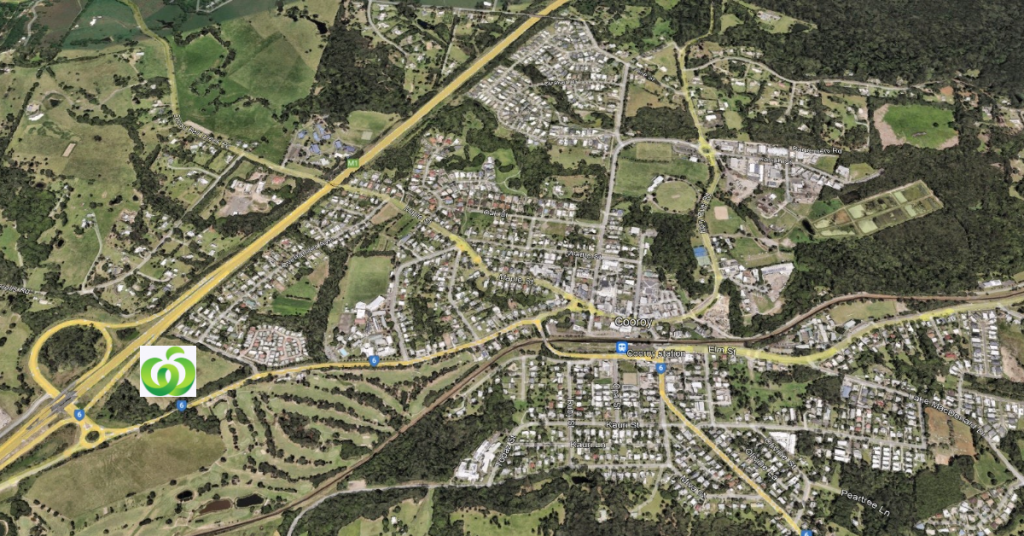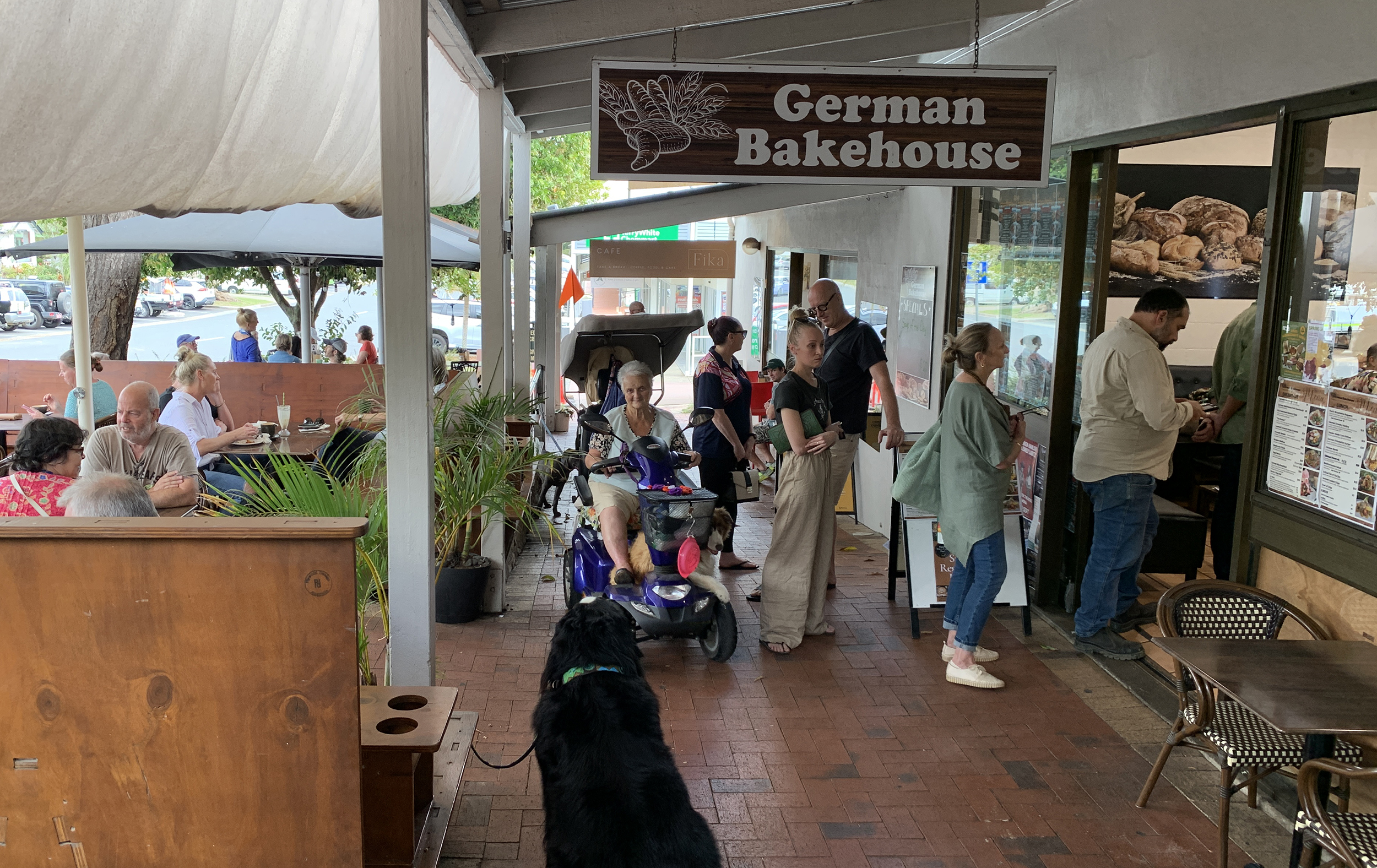How do you kill a town? With apathy, self-interest, bad planning plus a heavy-hitting developer with very deep pockets.
When I was elected to the amalgamated Sunshine Coast Council in 2012, the Cooroy Chamber of Commerce were seeking to increase the number of people visiting their town. They even proposed a sign on the Bruce Highway to encourage passing drivers to make a pit stop in Cooroy. (Highway signage is rigidly controlled by the state government.)
These days, Cooroy businesses appear to be doing well, thanks in large part to an increase in Cooroy residents living at developments such as Greenwood Grove Estate and Palm Lake Resort. On any day except Sunday, the town’s CBD is a hive of activity. Indeed, some long-term residents now complain that Cooroy has become too busy, and that they have difficulty securing easy parking. There’s little doubt that the town’s small businesses are faring better today than they were a decade ago. But all of that could change.

For many years the big supermarket chains, including Aldi, Woolworths and Coles, have been eyeing Cooroy as ripe pickings. But some canny “land banking” by vested interests has, until now, held the big supermarkets at bay.
However, Woolworths has purchased the vacant land on the corner of Myall Street and Ferrells Road, with the stated intention of turning it into a shopping centre. This is land on the extreme edge of Cooroy’s urban footprint, at the southern end of town. It’s the barren 6 hectares on the left as you enter Cooroy from the Bruce Highway, opposite the golf club land.

The parcel is zoned “Community Facilities”. This allows for educational establishments, healthcare, childcare and transport, as well as residential care and retirement homes. Note that list does not include a large shopping centre. Indeed, the Noosa Plan states that only limited, small scale retail outlets would be appropriate, and then only if they are occurring in conjunction with a larger community use on the same site.
An application to develop the land into a service station, shop, fast food restaurant, tourist park and storage facility was knocked back in 2015 by the Noosa Council on which I also sat. The reasons given were that such a development was not only in conflict with The Noosa Plan, but that it would “further disperse and fragment” the town’s business centre.
Now we have Woolworths seeking to place one of their generic supermarkets on the same land. I must point out that Woolies have made no mention of this to the council. There hasn’t even been a request for a pre-application meeting with council planners. Instead, Woolies is endeavouring to drum up community support via a resident survey and a lot of spin about how they really care about “the needs of the community”. One of the “project highlights” according to their dedicated website is “community consultation findings central to planning”. They are suggesting the development may include “community led services”, even though their primary aim is to aggressively commandeer Cooroy retail.
Many residents will no doubt deliver their approval to Woolies on the simplistic assumption that they may be able to access cheaper prices as compared with the existing two supermarkets and specialty shops in the town’s CBD. But one doesn’t have to look very far to see the consequences of supermarket developments on town fringes. Drive north to Gympie and then, even more dramatically, Maryborough, and see how the original CBDs have been emasculated, with vacant retail premises, boarded buildings and two-dollar shops all that’s left behind.
Indeed, there are towns right across Australia suffering from satellite supermarket developments. It’s the same story each time. The big players buy up cheap land beyond the CBD. Shoppers are then lured to drive their cars away from the town centres. The original CBDs are left gutted.
Are Australian town planners slow learners, or are the big, monopolistic players simply better at playing development poker? Woolies know the land in Cooroy is inappropriately zoned for their use. They also know council staff will likely recommend a refusal. But if they can drum up popular support in the community, that may deliver a winning hand when they get to the Planning and Environment Court.
And where is the Cooroy Chamber of Commerce in all of this? According to their president Sirah Robb, who is in the local real estate business, the Chamber is seeking opinions and ready to facilitate some “public consultation with Woolworths”. Thankfully, Sirah also tells me that the Chamber will eventually “look to advocate for the sentiment of our member businesses.”
That may come too late if Woolworths has already done a snow job on the local shoppers. Good luck Cooroy CBD!
(Like to have your say? Here is the Woolworths online survey.)


This Post Has 3 Comments
I want woolies, BP owns both petrol stations in cooroy. Needs competitive rates. Iga and seasons is more expensive than woolies and Coles put together. We need it . Also no fast food deliver to Cooroy we have to drive to Noosa. Definitely want woolies more value for money more variety on goods and prices. And more range of goods. Plus jobs it will create . Definitely can’t wait we need this so much .
Perhaps big retailers like Woolworths have a ‘Voice to Government’! I recently had cause to travel through Narromine in NSW, a town similar in size with Cooroy. The Coles supermarket is located centrally in the main street and the town is buzzing with the same feeling it had when I worked there in the 60’s.
You summed it up perfectly Tony, Gympie is a classic case as is Emerald in Central Queensland.